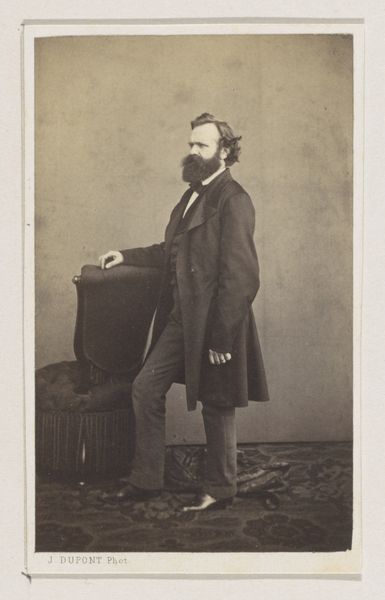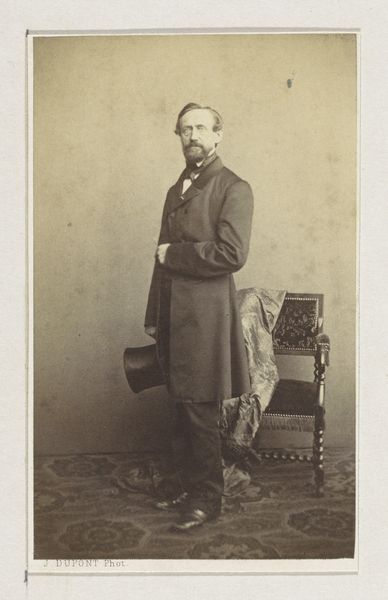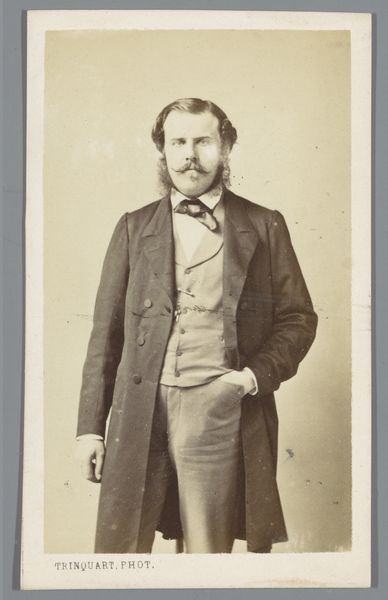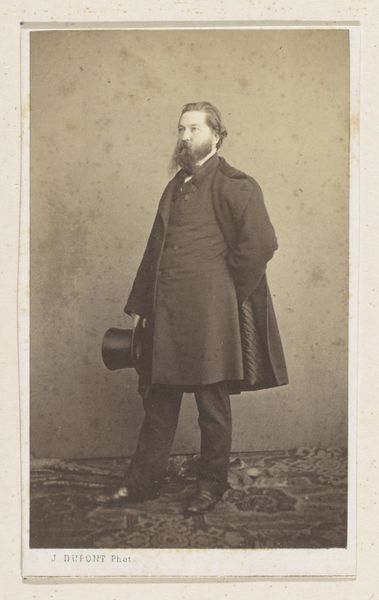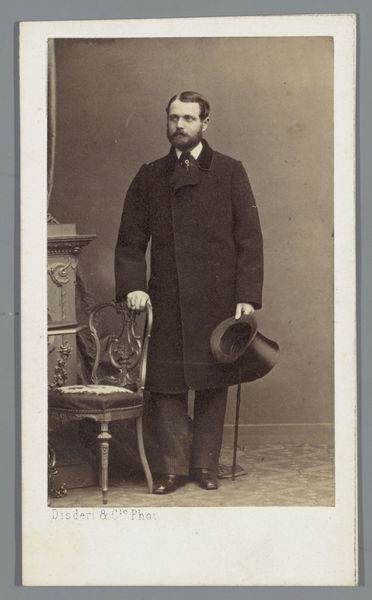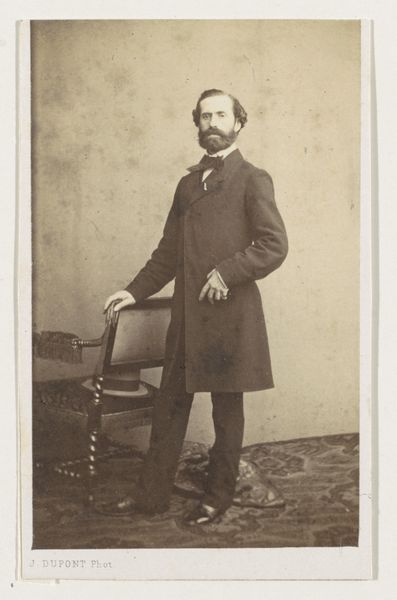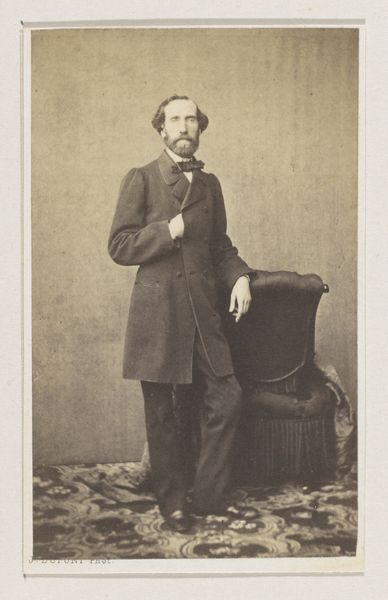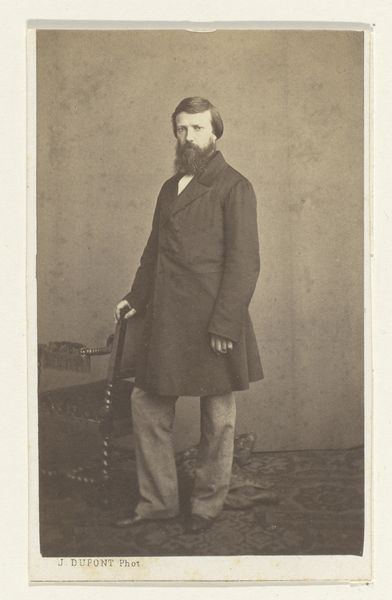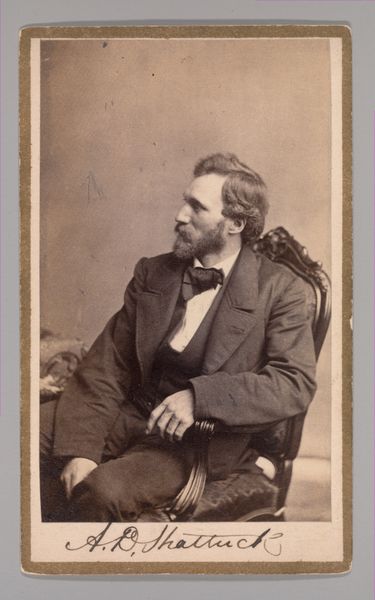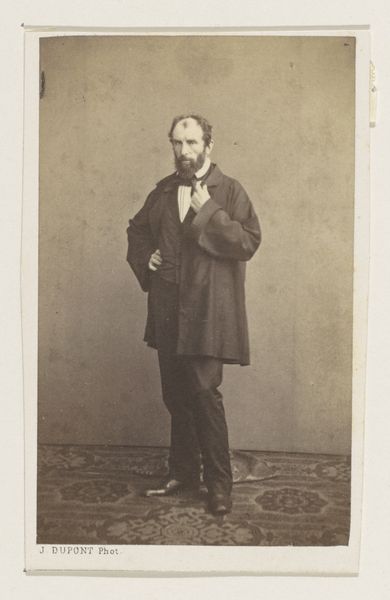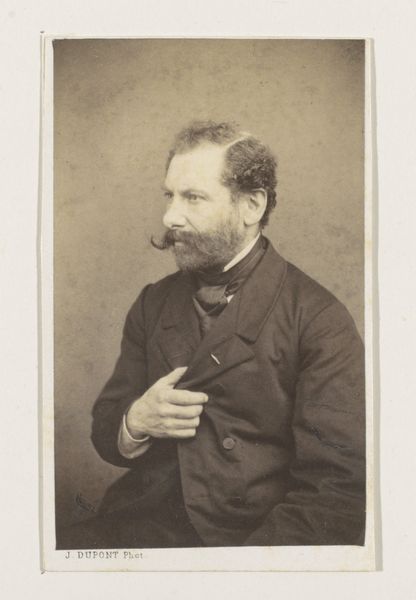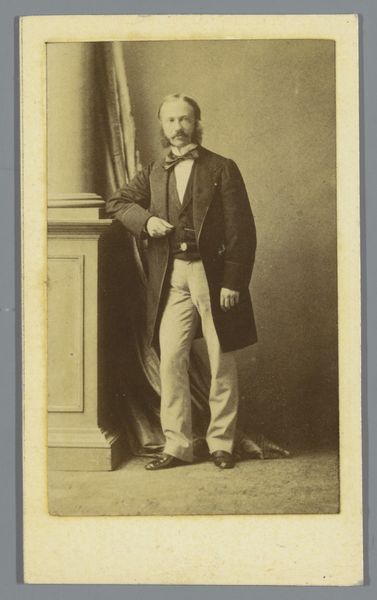
Portret van de beeldhouwer en schilder Joseph Jacques Ducaju, ten voeten uit 1861
0:00
0:00
Dimensions: height 100 mm, width 61 mm
Copyright: Rijks Museum: Open Domain
Editor: Here we have "Portret van de beeldhouwer en schilder Joseph Jacques Ducaju, ten voeten uit," a daguerreotype portrait by Joseph Dupont from 1861. The details in the clothing and the patterned carpet are really sharp. What stands out to me is this balance between the sitter's formality and what feels like an almost domestic interior. What do you see in it? Curator: I see a carefully constructed performance of bourgeois identity, staged against the backdrop of emerging photographic technologies. Consider the daguerreotype itself – a novel and exclusive medium. The sitter’s profession as both sculptor and painter underscores his ties to artistic and intellectual circles. But who was being excluded from these circles, both in front of and behind the camera? Editor: I hadn't thought about it like that, that the photograph itself says something about access and power at the time. So, how does the setting – his clothes, the furniture – factor into that? Curator: The clothing – the coat, the patterned cravat – signifies social status. Note the cane. These aren’t accidental choices. This image, however ‘intimate’ it feels, represents a conscious projection of identity. He is not just a man, but a man of means and intellect. But what kind of anxieties or assertions might have been wrapped up in this careful staging? Does this strive towards the modern bourgeoise ideal necessarily mirror reality for him? Editor: That tension you mentioned, between striving for something versus the lived experience…it adds another layer to the work for me. I'm starting to see how understanding the historical context opens up deeper questions. Curator: Exactly! It's about acknowledging what is presented, but also considering what remains unseen or unspoken. We’re not simply admiring a photograph; we’re interrogating the socio-political landscape it occupies.
Comments
No comments
Be the first to comment and join the conversation on the ultimate creative platform.
